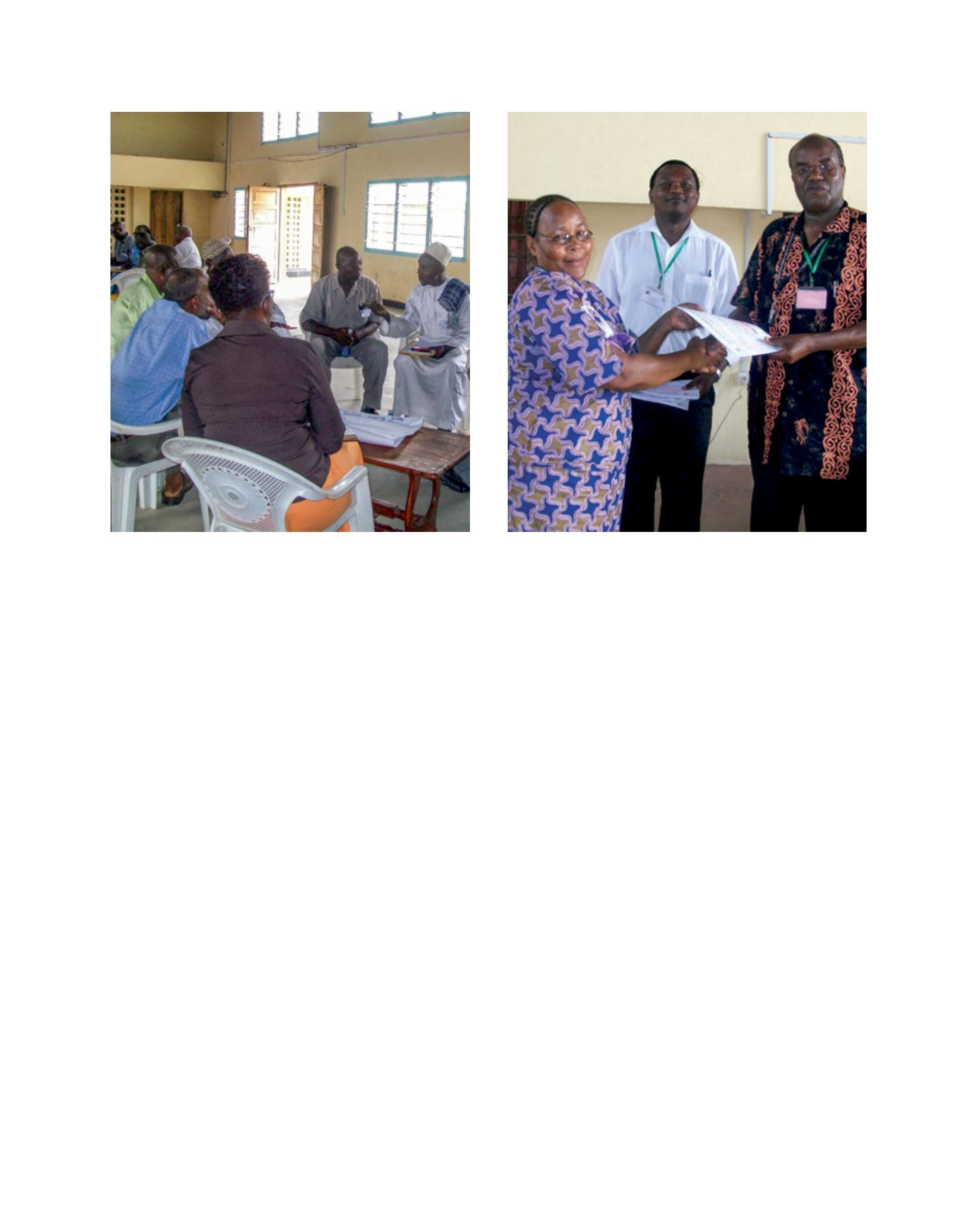

[
] 157
through religious institutions, and through political classes,
nationally and internationally – being reinforced in school
and in society at large. Education systems should teach chil-
dren to appreciate the diversity of cultures and learn what is
good from such diversity. People should learn and nurture
the spirit of working together for the common good. This
community spirit would mean that people would work
together as much as possible.
Here is an example from nature: small ants, and other small
insects that God has availed to educate us, should serve as a
model for our cooperation and sharing. The ants are able to
carry a huge cockroach from one corner of the house to the
other simply by cooperating. We, human beings, are capable
of doing greater things if we learn to work in cooperation like
ants, or like bees. We can live in peace and harmony only if we
learn to cooperate and share. That spirit must be promoted as
the political philosophy, devoid of the exploitative individu-
alism that has characterized our world today. This working
together for a common purpose will be the greatest boost for
the rapprochement of cultures. But we must work deliberately
and consciously to achieve this oneness. That is not a one-day
affair – it will require a long-drawn effort. The young should
be the targets for this training, and as new leaders, they must
adopt the philosophy and the attitude.
Patriotism:
This is the central pillar in the design of ATE,
similar to the central pillar of the traditional African hut.
We call it patriotic commitment to the common welfare;
which in the global community we should call the planet
Earth. Global society needs to know that, without consulta-
tion or charge to anybody, God gave us this planet and all
that is found therein, including the surrounding universe,
for the benefit of all. The problem is that the citizens of our
world don’t seem to know it and, for that reason, they loot,
plunder, rape, sell, betray and mess up the planet in every
way. Once the citizens of the world know the value of the
Earth, and how unfaithful we have been to it and to each
other, then we shall be alert and committed to paradise. The
new world that we have to create requires a new generation
of leaders and citizens who know the value of this planet,
who appreciate it as a God-given paradise, and who share it
among themselves with appreciation. With that knowledge,
the new world citizens will love the planet, will be jealous
of it, will work hard for it, will protect it, will cherish it, and
will be committed to it. This means that the new world will
have citizens and leaders who will be ready to do everything
possible to protect the planet and, above all, appreciate and
realize the potential and opportunities it holds for the benefit
of all. It will therefore be very hard to deceive the owners
of this paradise, and for the sons and daughters of paradise
to loot and destroy it as foolishly as we have hitherto done
through corruption and mismanagement.
That ethos of the five pillars will be taught to the children
of the world from the earliest age through the school system,
and to society at large so that it becomes a way of life, and a
culture of the people of the world. These world citizens will
be self-disciplined, self-driven, possessing integrity, harmony
and patriotism, and united by the love of the planet Earth as
a paradise that God gave to humanity for the benefit of all.
The five pillars will help the world’s citizens to reverse the
syndrome of underdevelopment and conflict. The mentality of
future leaders will follow a different path, a different philoso-
phy based on the concerns of human dignity and fairness.
Group work for peace: the UNESCO Emergency Project, Tana River County, by
the Kenya National Commission for UNESCO (KNATCOM)
Tana River delta, Kenya: awarding a certificate in capacity building for peace,
harmony and cohesiveness through the UNESCO Emergency Project
Image: KNATCOM (2013)
Image: KNATCOM (2013)
A
gree
to
D
iffer

















